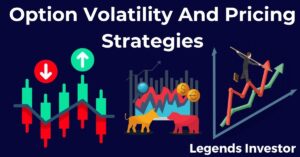Options trading might seem complex at first glance, but sticking to the basics can make it manageable. Options are contracts that give you the right, but not the obligation, to buy or sell an underlying asset at a set price before a specific date. Imagine having a tool in your investment kit that allows you to hedge against risks or speculate on future price movements.
Knowing the difference between call options and put options is crucial. Call options allow you to buy an underlying asset at the strike price, anticipating the asset’s price will rise. Put options, on the other hand, let you sell the underlying asset, expecting the price will drop. These are the building blocks of options trading.
Get familiar with the lingo to navigate this world more effectively. Terms like strike price, expiration, premiums, and underlying assets need to be part of your everyday vocab. Without these, it’s like trying to understand sports commentary without knowing the game’s rules.
There’s also the magic mix of time and intrinsic value in options. The time value is what investors are willing to pay for an option above its intrinsic value due to time left to expiration, often called ‘theta.’ Know that as expiry dates approach, this value can diminish rapidly, affecting your trading decisions. Intrinsic value is simpler, referring to the actual worth based on the asset’s current price related to the strike price.
Understanding these fundamentals gives you the proper foundation to expand your trading skills. It’s like learning a new language. Once you’ve got the basics down, you’ll be better positioned to tackle more advanced strategies with confidence.
Developing a Rock-Solid Trading Plan
Before jumping into trades, having a sturdy game plan is essential. It’s like having a map when you’re heading into unfamiliar terrain. A well-thought-out trading plan gives you clarity and direction, helping you weather the market’s ups and downs.
Set goals that are both realistic and achievable. Whether you’re aiming to boost your portfolio by a specific percentage or hoping just to maintain steady growth, defining your objectives is the first step. Write them down, track your progress, and adjust as needed. Remember, goals give purpose to the plan.
Risk management can’t be overlooked. Options trading, while rewarding, involves significant risks. Identify what you’re willing to lose on each trade and set your stop-loss levels accordingly. This way, you’re protecting your capital from unexpected market turns.
A plan isn’t set in stone. As you gather experience, adapt and evolve your strategy. Markets shift, and so should your approach. What works today might not be as effective tomorrow, so flexibility is key.
Think of your trading plan as your personal guide through the complex world of options. It keeps you grounded, focused, and ready to capitalize on opportunities with calculated confidence.
Choosing the Right Brokerage and Trading Platform
Picking the right brokerage is like choosing a trusted friend to support your trading journey. It can have a significant impact on your success in options trading, providing you with the necessary tools and guidance.
Start by considering what factors matter most to you. Whether it’s low commissions, user-friendly platforms, or lightning-fast trade executions, every trader has different priorities. Weigh these factors carefully to decide what fits your trading needs best.
Fees and commissions shouldn’t take a big slice out of your profits. Compare the costs across different brokerages to ensure you’re getting a good deal. Sometimes, lower fees can make a big difference in your returns. Look out for hidden charges or maintenance fees that might sneak up on you.
A good platform is packed with tools that boost your trading prowess. Real-time data feeds, charting tools, and customizable dashboards are just some features to watch for. The platform should also complement your trading style and enhance your decision-making process.
Don’t underestimate the value of solid customer support. Fast and reliable assistance can save you time and prevent costly mistakes, especially during volatile market conditions. Feel free to test their service level by reaching out with inquiries. A responsive support team can be worth its weight in gold.
Your brokerage and platform are both vital pillars supporting your trading success. Choose wisely to ensure a balanced, efficient, and rewarding trading experience.
Technical Analysis: The Foundation of Successful Trading
Understanding technical analysis is crucial for anyone looking to succeed in options trading. It’s all about examining statistical trends gathered from trading activity, such as price movement and volume.
Start with key technical indicators like moving averages, RSI, and MACD. These tools help you spot trends, pinpoint entry and exit points, and signal potential reversals. Moving averages can smooth out price data to identify the direction of a trend, while RSI provides insights into whether an asset is overbought or oversold. Meanwhile, MACD indicates momentum changes.
Reading charts is a core skill. They tell the story of a security’s past and can hint at future movements. Focus on candlestick patterns and chart formations like triangles and head-and-shoulders to make educated predictions.
Volume adds another layer of understanding. It shows how many shares or contracts have been traded, which can confirm price trends or warn of potential reversals. If a stock moves on high volume, it suggests strength in that direction.
Avoid common pitfalls, like relying too heavily on one indicator or overcomplicating your analysis. Technical analysis is part art and part science. Keep it simple and use multiple indicators to validate signals before taking action.
By mastering technical analysis, you equip yourself with the tools to make informed trading decisions and potentially boost your success in the dynamic world of options.
Fundamental Analysis: Assessing Market Conditions
Fundamental analysis digs into the core of what makes an asset tick by examining the big picture—economic factors, industry conditions, and the company itself. It involves understanding how various elements influence the asset’s value.
Company financials are your go-to source. Dive into balance sheets, income statements, and cash flow reports to get a clear picture of a company’s health. Look for trends in revenue, profit margins, and debt levels. These can signal how well the company is positioned for future growth.
Economic indicators and the news offer a broader view. Employment data, interest rates, and GDP are just a few factors that can sway markets. Keeping an eye on the news helps you gauge market sentiment and assess potential impacts on your trades.
International markets add another layer of complexity. Currencies, geopolitical events, and global trade policies can influence domestic market conditions. Being aware of these factors helps in making smarter trading decisions that consider the wider economic landscape.
Balancing technical and fundamental analysis gives you an edge. While charts show price movements and patterns, fundamentals provide the context behind these shifts. Together, they form a well-rounded approach, offering a more complete strategy in the options trading game.
The Power of Diversification in Options Trading
Diversification is one of the oldest tricks in the book for managing risk in options trading. By spreading your investments across different assets, sectors, or strategies, you can mitigate potential losses and stabilize your returns.
Consider building a diversified options portfolio that includes a mix of stocks, bonds, and other asset classes. This approach helps buffer against the volatility of individual assets, reducing the impact of a poor performance by one element on your overall portfolio.
Trading across various sectors ensures you aren’t overly reliant on the performance of a single industry. If one sector takes a hit, your investments in other areas can help offset the loss. Keep an eye on market trends to identify emerging sectors and potential opportunities to diversify.
Balancing high-risk and low-risk options is key. Incorporating a blend of conservative investments with more speculative plays allows for growth potential without exposing yourself to excessive risk. It’s about striking the right balance for your personal risk tolerance and financial goals.
Using options as hedging tools is another savvy move. This strategy can protect your portfolio against market downturns. For instance, purchasing put options as insurance against long positions can limit potential losses during declining markets, giving you peace of mind.
Psychology of Trading: Maintaining Discipline and Emotional Control
Mastering the psychology behind trading might be just as important as the strategies and analysis you use. Emotions can run high in the market, and knowing how to stay cool under pressure is essential.
Recognize and overcome common emotional biases that can lead you astray. Fear might push you to sell too soon, while greed could tempt you into risky trades. Being aware of these tendencies is the first step toward managing them.
Patience and discipline are your allies in trading. Resist the urge to constantly tweak your strategy based on short-term market noise. Stick to your plan and trust the process you’ve laid out.
Building mental resilience is key. This involves learning from mistakes, maintaining focus, and not letting previous losses dictate future decisions. Think of it as a mental workout—the more you practice, the more resilient you become.
Handling success is as important as managing losses. Don’t let a few good trades inflate your ego. Stay grounded, keep learning, and treat every win as an opportunity to evaluate what worked and how to replicate it consistently.
Leveraging Technology: Automation and Algorithms in Trading
Harnessing technology can supercharge your options trading by introducing efficiencies and reducing the impact of emotional decisions. Automation tools and algorithms have become integral in modern trading strategies.
Algorithmic trading involves using computer algorithms to execute trades at high speed and volume, based on pre-set criteria such as price, timing, or quantity. This can help you take advantage of market conditions that may be missed by manual trading.
Trading bots are a popular tool, especially for those who don’t have the time to monitor the markets constantly. These programs can execute trades on your behalf, following your strategies precisely. While they save time, it’s crucial to program them correctly and keep them updated to reflect any market changes.
Automation comes with risks. Over-reliance on automated systems can be dangerous, especially if there’s a system glitch or if market conditions change rapidly. Always monitor automated trades and be ready to intervene if needed.
Blending technology with your own intuition and analysis can yield powerful results. Use these tools as aids, not replacements, for your judgment. By doing so, you ensure that technology enhances your strengths as a trader without diminishing your control.
Continuous Learning and Staying Informed
The world of options trading is ever-changing, and keeping up with the latest trends can give you an edge. Embracing the mindset of a lifelong learner ensures you stay ahead of the curve.
Ongoing education is crucial. Consider participating in webinars, online courses, or workshops that provide fresh perspectives and advanced concepts. These resources can introduce you to sophisticated strategies and industry insights.
Staying informed about market trends and economic news is part of the daily routine for successful traders. Regularly read financial news, subscribe to relevant channels, and follow thought leaders in the trading community. This helps you spot opportunities and gauge market sentiment.
Networking with other traders can be incredibly beneficial. Join forums, attend meetups, or engage in online trading communities to exchange ideas, share experiences, and learn from others. This camaraderie can provide support and different viewpoints.
Your learning shouldn’t have an end date. By committing to continuous improvement, you keep your skills sharp and adaptable to whatever the market throws your way.



